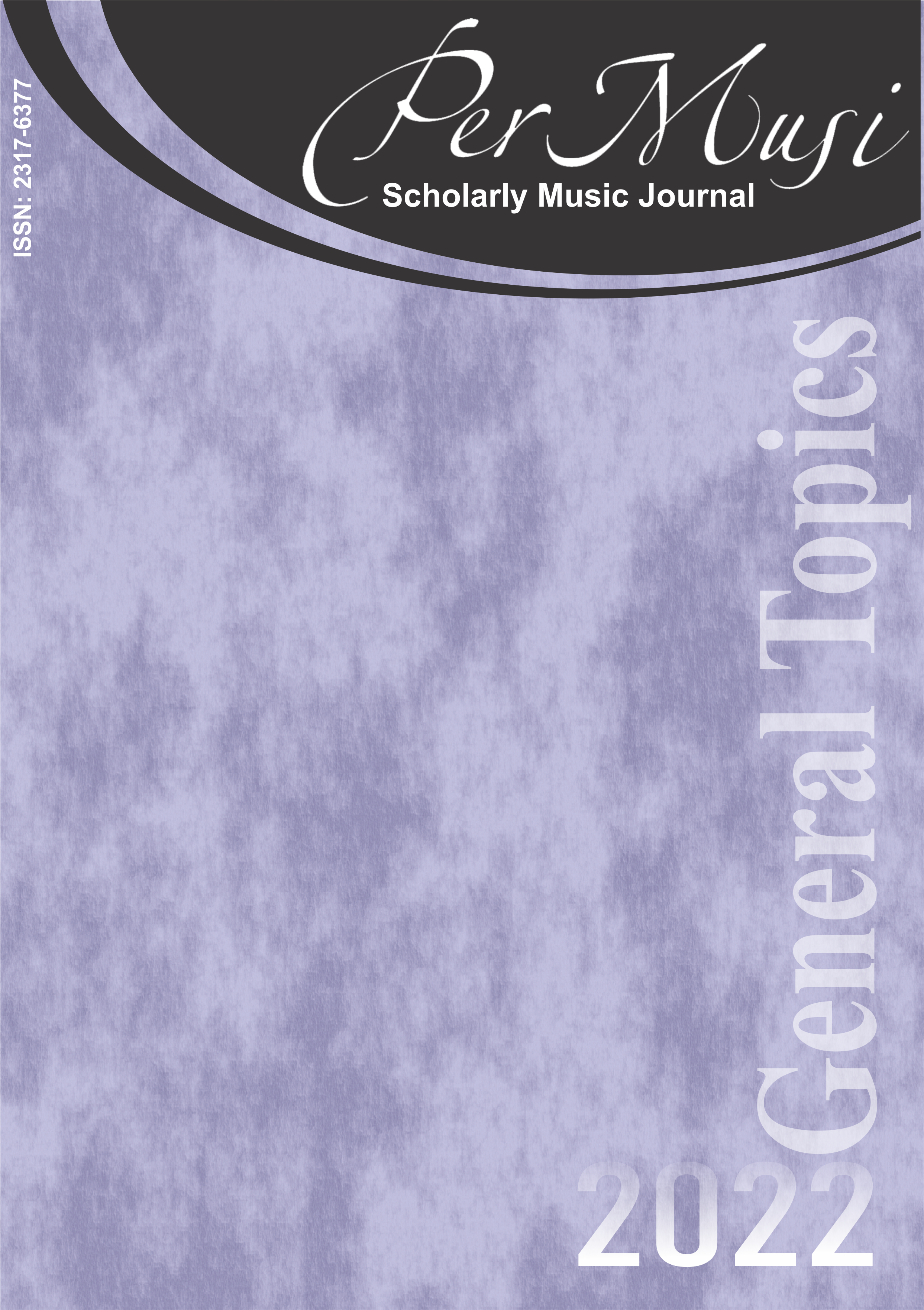Integração e oposição de instrumentos ocidentais e tradicionais japoneses em November Steps de Takemitsu
DOI:
https://doi.org/10.35699/2317-6377.2022.36944Palavras-chave:
November Steps , Takemitsu, Yōgaku, Instrumentos japoneses tradicionais, TransculturalismoResumo
Este artigo examina a combinação de instrumentos musicais japoneses e ocidentais tradicionais na obra November Steps, de Tōru Takemitsu. O compositor trouxe para a composição yōgaku (música de estilo ocidental) não somente dois instrumentos japoneses tradicionais como também sua música tradicional, com a intenção de criar uma oposição entre as características musicais japonesas e ocidentais, dando-lhes a forma de forças irreconciliáveis. Para que se possa fazer uma consideração justa deste assunto, é necessário conhecer os fatores históricos e circunstanciais que contribuíram na problemática envolvida neste ato pioneiro de incorporação da estética e cultura tradicionais do Japão no mundo da composição musical.
Referências
Deguchi, Tomoko. 2005. Forms of Temporal Experience in the Music of Toru Takemitsu. Buffalo, N.Y.: State University of New York at Buffalo Doctor of Philosophy Dissertation.
Ferranti, Hugh. 2016. “The Kyushu biwa traditions”. In The Ashgate Research Companion to Japanese Music, edited by Alison McQueen Tokita and David W. Hughes, 106-126. London: Routledge
Flavin, Philip. 2016. “Sōkyoku-jiuta: Edo-period chamber music”. In The Ashgate Research Companion to Japanese Music, edited by Alison McQueen Tokita and David W. Hughes, 169-195. London: Routledge.
Galliano, Luciana. 1998. Yōgaku – Percorsi della musica giapponese nel Novecento.Venezia: Caposcarina.
Kater, Carlos. 1997. Catálogo de Obras de H.J.Koellreutter. Belo Horizonte: FEA/FAPEMIG – Fundação de Amparo à Pesquisa de Minas Gerais.
Lehrich, Christopher. 2014. “Hearing Transcendece: Distorted Iconism in Tōru Takemitsu’s Film Music.” Signs and Society vol. 2 no. S.1 Suplement 2014. Semiosis Research Center at Hankuk University of Foreign Studies: 215-245.
Moroi, Makoto. 1967. Five Pieces for Shakuhachi. Score. Tokyo: Ongaku no Tomu Sha Corp.
Takemitsu, Tōru. 1967. November Steps. New York, N.Y. Edition Peters.
___________________. 1995. Confronting Silence. Selected Writings. Lanham, Maryland: The Scarecrow Press.
Downloads
Publicado
Edição
Seção
Licença
Copyright (c) 2022 Per Musi

Este trabalho está licenciado sob uma licença Creative Commons Attribution 4.0 International License.

Exceto onde está indicado, o conteúdo neste site está sob uma Licença Creative Commons - Atribuição 4.0 Internacional.












